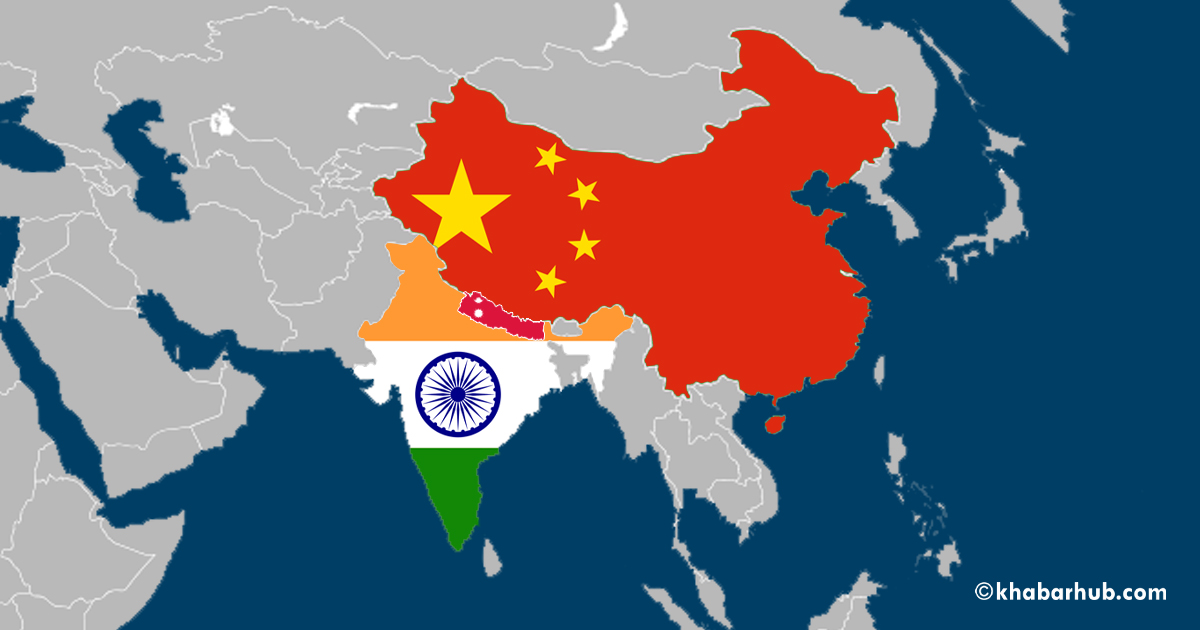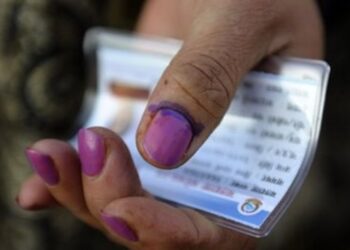A 335 sq km triangle, marked by the positions of Limpiyadhura-Kalapani-Lipulekh, currently in India’s possession and claimed by Nepal, has developed into an open feud between the two countries.
Although the dispute has been festering, it is the timing of the recent flare-up, its connection with other border tensions and the unprecedented actions taken by the Nepalese government that merit attention.
Given Nepal’s physical location, the crisis inevitably has a China factor especially as China’s economic influence in the country has been growing rapidly.
In 2020, pre-COVID-19 figures indicated that China accounted for over 90 percent of foreign direct investments. To overcome Nepal’s dependence on India not only for imports but also on Indian ports of entry, Kathmandu signed a transit protocol with Beijing last year.
Even earlier, in November 2019 the Nepalese government had objected to India’s ‘new’ political map, released after the internal re-organisation of boundaries and status of Jammu and Kashmir.
The current flare up between India and China along the un-demarcated border known as the Line of Actual Control (LAC), leading to the death of 20 Indian soldiers and an unspecified number of their Chinese adversaries – the first incident involving death of troops at this scale – has given a special piquancy to the border issue between India and Nepal.
On 20 May 2020, Nepal published a new official map including the above region as part of its territory, a decision that was pitched as being a direct response to Indian government actions.
On 8 May, India had inaugurated a newly-built road link to Kailash Mansarovar in the Tibetan Autonomous Region that runs through the Lipulekh pass.
Even earlier, in November 2019 the Nepalese government had objected to India’s ‘new’ political map, released after the internal re-organisation of boundaries and status of Jammu and Kashmir.
Nepal had then protested the inclusion of Kalapani, a 35 square kilometre area in the Pithoragarh district under the control of the Indo-Tibetan Border Police, as part of India.
However, it must be pointed out that maps since 1905, released by the Survey of India, the national survey and mapping organisation, have shown this area as Indian territory.
At a more general level, the latest crisis highlights a fundamental challenge that India has often faced in its bilateral relations with neighbouring countries in the form of complicated ‘intermestic’ and triangular dynamics.
Furthermore, India has had an army base in the Kalapani region near the Lipulekh pass since the early 1950s and despite requests, has not given up this position due to its strategic value.
The high ground at the pass enables the Indian army to monitor routes that connect with Tibet.
Nepal’s latest moves to assert its position and to directly challenge its neighbour have included a decision by the governing party to table a bill in Parliament to amend the constitution and update the new political map as part of the national emblem.
The lower and upper houses have both unanimously endorsed this proposal. Describing Nepal’s new official map as “artificial” and unacceptable, Indian government officials have portrayed the actions as unilateral.
What explains this rapid deterioration in relations and the willingness of the Nepalese regime to escalate tensions with its neighbour and to challenge the status quo?
While it is true that India had chosen to ignore the problem, the current hard-line stance on the part of the Nepalese government has reduced the room to manoeuvre in finding a resolution through dialogue.
At a more general level, the latest crisis highlights a fundamental challenge that India has often faced in its bilateral relations with neighbouring countries in the form of complicated ‘intermestic’ and triangular dynamics.
This time involving India and Nepal, two countries that have long been described in brotherly terms. At stake is a relationship that has been defined by an open border and contiguous regions with deep inter-connections of marriage, migration and economic exchange.
Given the location of the dispute in a tri-junction area, there is also the role of China, which requires close examination, especially given the ongoing tensions along the LAC.
Skirmishes along the LAC have been a recurring phenomenon. However, two new features in the latest tensions stand out.
First, it has appeared that military positions at multiple locations have been simultaneously tested – a form of pressure point tactics. Both sides have demonstrated a new level of risk-taking, signalling firmness to each other as well as communicating a position of strength to the domestic audience.
Second, the tensions with Nepal have been developing and escalating almost simultaneously.
This area too involves a bilateral dispute, complex historical inter-regional connectivity and a triangular dynamic given its location near the India-Pakistan border.
In early May 2020, scuffles along the Sino-Indian border – in the Himalayan region of Ladakh – escalated, into what was then described as another significant standoff along the 3,488-kilometre-long disputed border.
Coming at a time when both India and China have been battling a global pandemic, albeit, at different times, the reasons for the precise timing of the flare-up have remained unclear.
Tensions extended to another section of the border, the Nathu La Pass in the Indian state of Sikkim and heightened efforts were made to engage in talks.
A de-escalation process was initiated, and by 9 June, the situation was said to be under control. However, India’s road-building activities in the three borderland states of Ladakh, Himachal Pradesh and Uttarakhand have provoked a build-up of Chinese troops in the Galwan valley.
This has renewed the focus on an area along the LAC known as Aksai Chin. China has had Aksai Chin under its control since the 1962 border war and India has regarded it as part of Ladakh.
This area too involves a bilateral dispute, complex historical inter-regional connectivity and a triangular dynamic given its location near the India-Pakistan border.
These recent developments threaten to weaken India’s position vis-à-vis China. They have frayed what has already been a complicated relationship between India and Nepal in recent times.
While an open border between the two countries has facilitated close economic ties, it has also led to claims and perceptions of an unequal and asymmetric relationship.
Nepal depends on India for virtually all of its oil, over 90 percent, along with the majority of other goods. Two recent events, in particular, have caused friction between the neighbours—first, an unofficial blockade of exports to Nepal.
This blockade was seen as India’s efforts to pressure the government on the matter of Madhesi demands for better political representation and as direct interference in Nepalese politics.
Secondly, the election of a Communist Party government under the leadership of K.P. Sharma Oli in 2018 has acted as an amplifier for long-term undercurrents of anti-India sentiment.
A real danger nevertheless lurks in the all-round growing trend towards greater assertiveness which runs the risk of escalating into violence.
The recent flare-up also appears at a time when China’s involvement in Nepal’s politics and economy has increased.
This was exemplified by President Xi Jinping’s state visit in October 2019. Numerous agreements including on trade, investment, security and border management were signed, a 3.5 billion RMB (USD 493 million, €447 million) aid package to be delivered between 2020 and 2022 “to uplift the living standard of Nepali people” was announced, and ties were elevated to the level of “strategic partnership”.
In several ways, these latest incidents confirm the predicament that both smaller states and India find themselves in with the growing role of China in South Asia’s politics and economics. Willingly or otherwise, the smaller countries are caught up in the reverberations of a more assertive China and India.
In terms of China’s regional role, the assertiveness is visible in several ways. In the form of a push for military dominance in critical strategic areas and the form of economic outreach – specifically to South Asia, not least through the multi-billion-dollar Belt and Road Initiative.
On India’s part, a greater effort to secure border areas has also altered the status quo that had previously prevailed.
A real danger nevertheless lurks in the all-round growing trend towards greater assertiveness which runs the risk of escalating into violence.
(Dr. Subrata Mitra is an Emeritus Professor of Political Science at Heidelberg University, Germany; Dr. Jivanta Schoettli is the incoming Director of Ireland India Institute, Ireland and Dr. Markus Pauli is a Lecturer and Research Fellow in Political Science at Dublin City University, Ireland)
Nepal Institute for International Cooperation and Engagement (NIICE), Nepal’s independent think tank, and Khabarhub — Nepal’s popular news portal — have joined hands to disseminate NIICE research articles from Nepal.









Comment